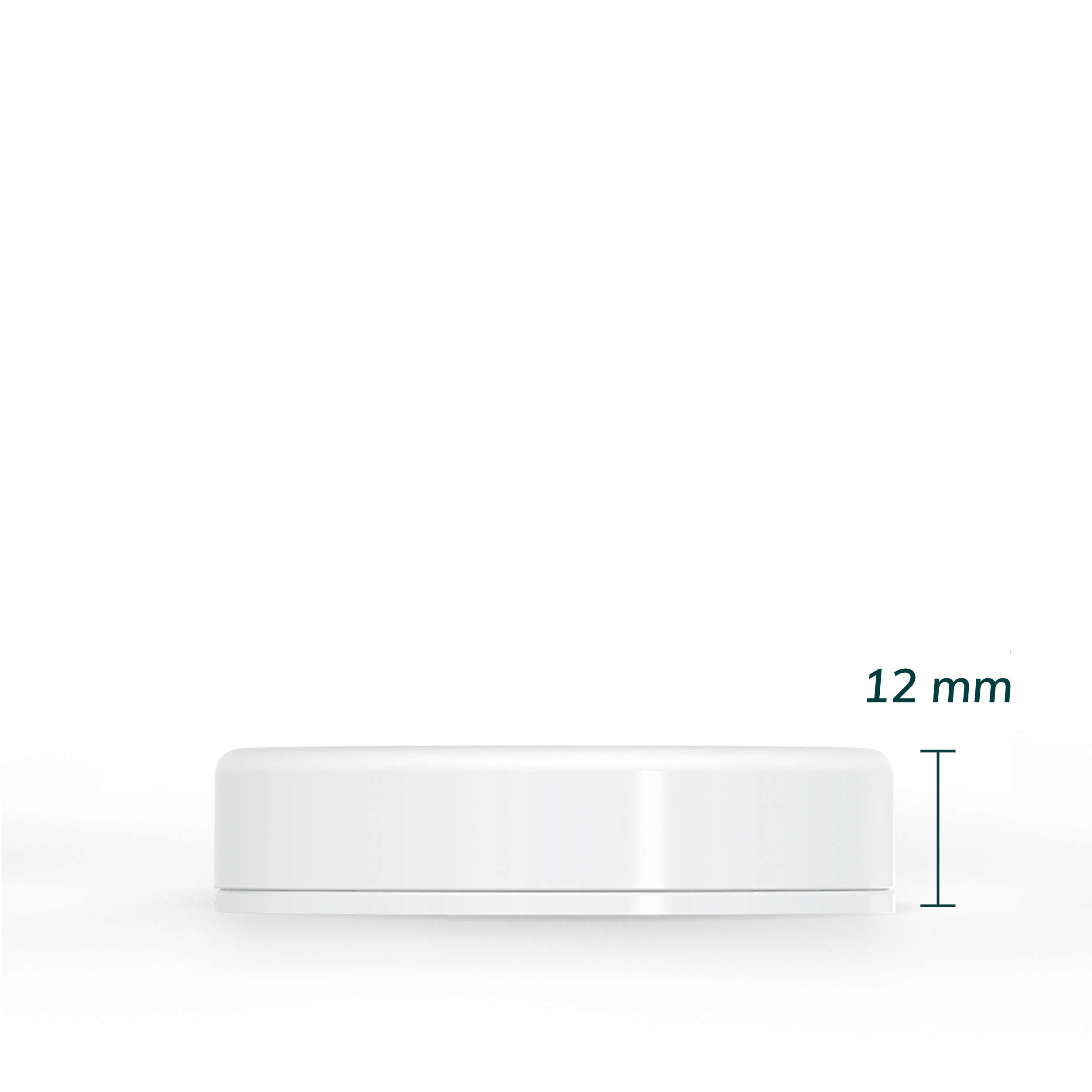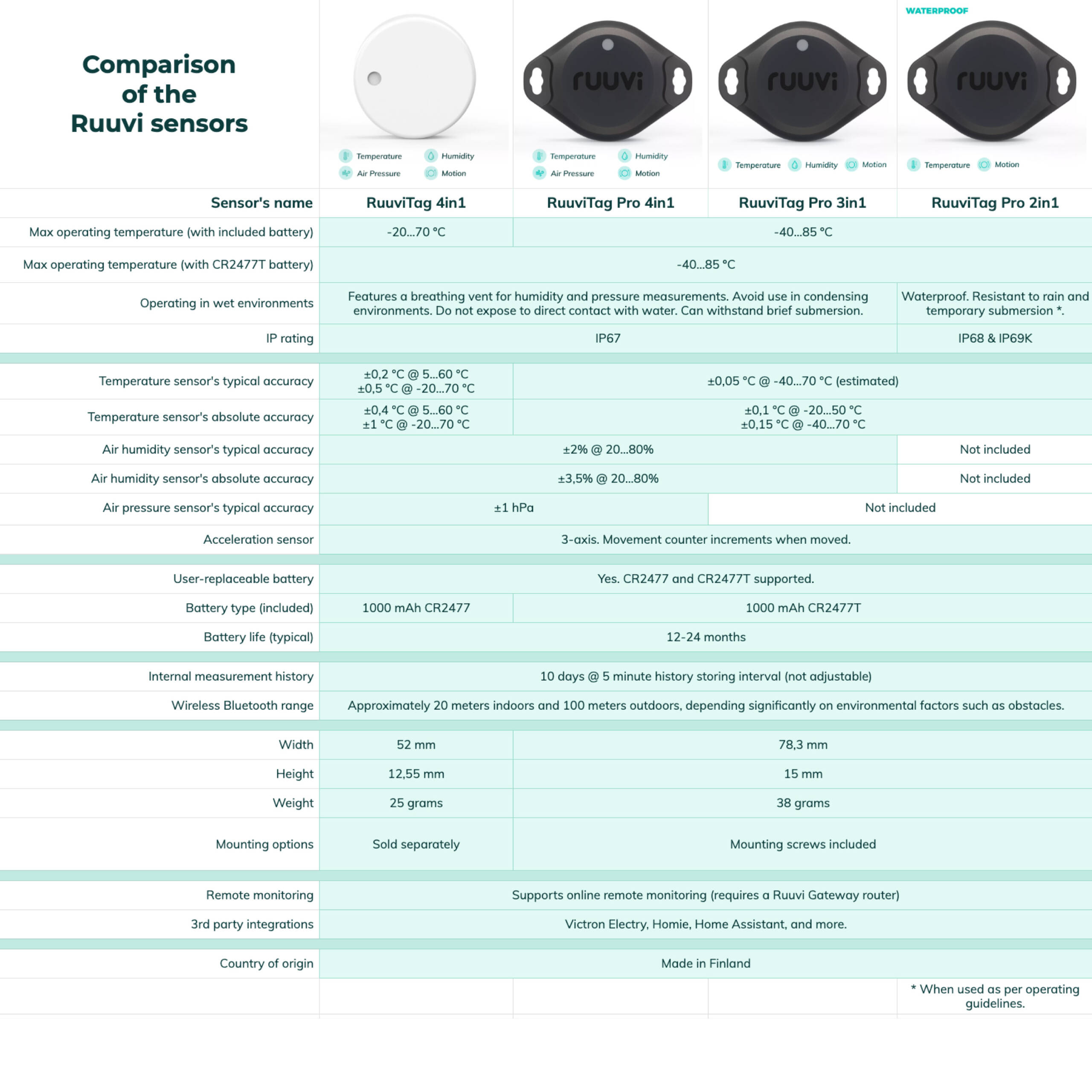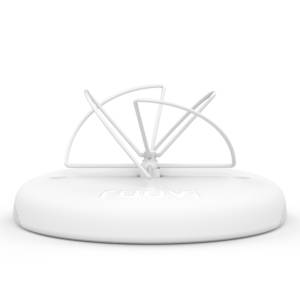Sailing is often known as the most noble way of transportation and is also one of the oldest. Nowadays, it is still seen as the best way to spend summers, or even years! Unfortunately, this glorious lifestyle also comes with its own set of worries and problems, often caused by environmental factors. By installing a wireless monitoring system on your sailboat, you can prevent damage and costly repairs.
As sailboats are used in water, mainly at the sea, moisture poses one of the biggest problems. Excessive humidity results in an optimal environment for mould to grow. In areas exposed to moisture and humidity, wood parts can start to expand. In addition, excessively humid air can cause water to condensate in unfavourable places.
On the other hand, excessively high temperatures can spoil food inside your boat’s fridge. In addition, very high temperatures in the engine room will increase fuel consumption, corrosion of parts, and in the worst case scenario can melt the engine.
Also, there should never be too much water in the bilge. And, being able to tell all by yourself whether storms or other unfavourable weather conditions are likely to happen in the upcoming days would be very useful.
These problems are all related to changes in the environment. These changes can be monitored and hence prevented before they cause bigger issues.

What humidity levels are desirable inside a boat?
Relative humidity of 30% – 50% is the ideal humidity level inside a sailboat. This range is the same as in homes or offices, as it is comfortable for us humans. This range of humidity is also safe for the wood parts of your boat.
In relatively low humidity of 30% – 50%, mould does not grow and the risk of condensation is not as prevalent as in higher humidity. This range, however, can be difficult to maintain on a sailboat, as moist sea air is constantly blowing into the cabin.
What causes condensation inside a sailboat?
Warm air contains more water vapour than cool air. When warm air cools down, relative humidity increases. When relative humidity becomes 100%, the air cannot hold any more water in it, which means that water will condensate on the cooler surfaces.
Water in the bilge
Sea water is usually cooler than air. This is why water condensates easily on the surfaces that are below the water level. As the bilge is always below the surface, there is usually some water present. Although, condensation is not the only reason why there may be water in the bilge.

How can excessive humidity damage a sailboat?
One of the biggest contributing factors to excessive humidity in a sailboat are leakages. As some water is leaking inside your sailboat, it will increase the air humidity. This is why you should constantly check all the possible spots where a leakage could occur.
Higher humidity levels than recommended can cause three main types of problems:
- Structural damage
- Decorative damage
- Electrical damage
1. Monitoring humidity can save a sailboat’s structure
Most sailboats are made of fibreglass. Most fibreglass materials have some wood or cardboard inside them. Highly moist air will have negative effects on any parts that contain wood. They can start to swell and in the worst case scenario, they can cause the hull to sag.
If the integrity of the boat is compromised, it can get really expensive to repair the boat. This is why you should always keep an eye on the humidity levels inside your sailboat, as well as any leakages found on the boat.
2. Decorative damage from excess humidity
As mentioned above, wood is fragile in humid environments. Still, wood is one of the most commonly used materials inside a sailboat. For example, doors and furniture are often made out of wood.
Excessive humidity inside a sailboat can cause these wooden parts to warp. This can lead to bent doors which will not close, or tables becoming unbalanced.
Also, air humidity above 70% is optimal for mould to grow. Mould can grow in mattresses and pillows. Mouldy mattresses can cause allergies and even illnesses, which is just one good reason to monitor humidity inside a sailboat. You do not want to feel under the weather on a long voyage.
3. Electrical problems due to high humidity
Water and electricity do not go well together. High humidity and condensation can expose wires to water. Water can cause corrosion and short circuits, which are difficult to repair, not to mention dangerous.

How to decrease humidity inside a sailboat?
The most important factor in decreasing humidity is proper ventilation. If air is still inside a sailboat, it will become more humid. Open the hatches and doors once a while.
As mentioned earlier, you should also do a routine check of possible leakages. If you can keep water out of the inner sailboat, you should be fine.
Are dehumidifiers or fans necessary?
Dehumidifiers and fans are great tools for decreasing humidity. Although not always necessary, they can be very helpful for many sailors.
Lower air humidity inside a sailboat makes the air more comfortable. This is why most sailboats nowadays come with dehumidifiers. If you do not have one, you should first monitor humidity levels inside your sailboat and then make a decision based on the measurement data.
Mould grows in stagnant air. Ventilation is a great way for making sure that mould is not a problem.
Monitor temperature inside your sailboat’s fridge and cabin
Air temperature is important in a few places inside a sailboat. These include the cabin, engine room and food storage areas and devices. Measuring water temperature is also a nice bonus.
Wireless sailboat fridge monitoring
Well-functioning fridges on sailboats are crucial for longer passages. Food should be stored at temperatures close to 4 °C (40 °F) according to the FDA.
If the fridge or freezer malfunctions, you will be left without fresh food. Sailboat fridges are not as stable as regular house fridges, so a monitoring system is really important.
For more in-depht information about fridges and freezers, head to our blog. Here you can access fridge and freezer blog posts!

Why should you monitor sailboat cabin temperature?
The right temperature is key for an enjoyable feeling on a sailboat. Heating is on the other hand expensive. You should try to find the optimal temperature where you feel comfortable and heating is minimal. This calls for a temperature monitoring system. Such a system should ideally measure temperature round the clock, pull the data into interactive graphs in an easy-to-use application, and alert you if a measurement is outside its optimal range.
Relative humidity increases when temperature decreases
If you are sailing in colder regions, it is wise to keep a steady temperature. If the air inside the sailboat decreases significantly, relative humidity will increase proportionately. High relative humidity is uncomfortable for humans, so it is wise to keep heating the room to have steadier air humidity levels.
Short term weather predictions for sailors
Did you know that you can become an accurate meteorologist by yourself? By having access to a barometer and a wind indicator, you can make pretty accurate predictions of upcoming weather conditions. You can read more about it from our blog post here.
What are the first signs of bad weather?
First signs of bad weather at the sea are darker clouds building up. Try to look for signs of forming clouds and you can try to avoid being at sea during a storm.

Wireless condition monitoring for sailboats with Ruuvi
Ruuvi is a Finnish company that produces environmental monitoring devices. Ruuvi currently offers measuring sensors called RuuviTags which work via Bluetooth. If you want to monitor important assets like sailboats at all times, then the Ruuvi Gateway is your perfect choice. Ruuvi Gateway listens to RuuviTags’ measurements and uploads them to the Ruuvi Cloud. You can read measurement data via the Internet from the Ruuvi Cloud, from multiple RuuviTags in different locations.
Ruuvi Gateway requires an Internet connection, from a router or via an Ethernet cable.

What can a RuuviTag measure?
RuuviTag measures air temperature, air humidity, air pressure and movement. RuuviTag is very small and can be placed almost anywhere. A normal RuuviTag operates in temperatures between -20 °C (-4 °F) and +70 °C (158 °F). RuuviTag Pro operates in temperatures between -40 °C (-40 °F) and 85 °C (185 °F). Hence it can be placed anywhere on the sailboat without any risk, (except maybe not right next to the motor, but you get the idea…)
RuuviTag works with a free application. The application allows you to read real-time measurements, examine past measurements in a graph format, and set customisable alerts when measurements fall outside their preset limits. For example, you can set the app to send an alert when the fridge temperature is above +8 °C (46 °F). This allows you to take an immediate action to prevent your food from spoiling.

What to monitor on a sailboat?
Here are eight suggestions on the areas, environmental factors and assets, which you could monitor inside your sailboat. Ruuvi’s devices can of course monitor all of these environments!
1. Monitor your fridge and freezer temperature
Temperature is crucial for certain foods to stay fresh. Make sure that your food is edible for as long as your planned voyage.
2. Monitor your cabin temperature and humidity
Monitoring cabin temperature and humidity will help you to be more comfortable, save on energy consumption costs and prevent moisture related damages.
3. Monitor temperature and humidity inside your sailboat’s bedrooms
Monitoring bedroom conditions can help you sleep better, both due to comfortable temperatures, and also by preventing harmful mould from growing inside the bedroom fittings.
4. Monitor humidity in the bilge
Monitoring humidity in the bilge can help you identify possible problems happening to the bilge pump as well as excessive water accumulation. Bluetooth signals do not travel well under water. If you lose the Bilge sensor’s reading, your bilge could be full of water.
5. Monitor the conditions of your batteries
Batteries should be kept in stable conditions. It is wise to examine battery temperature in the colder regions. Humidity should also be kept low to prevent condensation which could harm batteries.
6. Monitor the engine room’s temperature
Find out the average temperature in your engine room with the help of RuuviTags. Then you can receive an alert if this normal temperature is exceeded and something could be going wrong.
7. Monitor weather conditions
Monitoring outside weather conditions can help you make weather predictions. RuuviTag is equipped with a barometric sensor, so you can examine changes in air pressure over the course of several days.
8. Measure sea temperature locally
RuuviTag Pro 2in1 is waterproof. You can receive precise water temperature measurements with its help. You can, for example, compare different regions’ water temperatures.
What would you measure?
If you have other places where you would like to use Ruuvi sensors, please tell us in our social media channels!
Ruuvi and Victron inside a sailboat
Did you know that Victron has integrated RuuviTags into their battery monitoring system? Victron produces solutions for batteries and their charging. They have great options available for sailboat batteries. You can monitor your battery’s conditions from Victron’s control panels and adjust the readings. You can also receive RuuviTags’s measurements into the same control panel, which is really convenient! Read more about our integration with Victron here!
Check out this informative video to find out more how RuuviTags work with Victron remote monitoring system VRM.
Conclusions
Sailboats are fun to have. But as someone has once said: “Sailing is a really expensive way to travel for free”. This means that there are almost always some things to repair and replace.
By monitoring temperature and humidity levels inside a sailboat, you can ensure your sailboat’s longevity. By being aware of the conditions inside a sailboat, you can avoid costly structural or mechanical repairs.
Ruuvi is a Finnish company producing environmental monitoring systems. Read more about our offering and find out how you can start to measure the conditions on your sailboat!
Buy Temperature And Humidity Sensor to Your Boat
RuuviTags can measure the environmental conditions of your sailboat. Monitor humidity constantly and ensure your sailboat's immaculate condition.
39,90€
Ruuvi is based in Finland. If you’re an EU consumer, VAT is included. If you’re a non-EU customer, you don't pay VAT. If you're an EU business, insert your VAT ID at checkout.
In stock
RuuviTag Sensor (4in1)
| Quantity | Unit Price(€) |
|---|---|
| 1 | 39,90 |
| 2 | 37,40 |
| 3-5 | 36,90 |
| 6-8 | 35,90 |
| 9-12 | 34,90 |
| 13-25 | 33,90 |
| 26-99 | 32,90 |
Are you looking for bigger quantities? Contact us for pricing.
FAQ
What is the ideal air humidity inside a sailboat?
Roughly 30% to 50% is the ideal relative humidity inside a sailboat. Usually, the humidity levels are higher than this, but it can be decreased with proper ventilation and dehumidifiers.
What can excessive humidity damage inside a sailboat?
High humidity can cause the fibreglass to soften, it can warp wooden furniture and provide ideal conditions for mould to grow. Prolonged excessive humidity can make a sailboat unusable.
How to tell if bad weather is approaching at the sea?
If your barometer tells you that air pressure is decreasing significantly, a storm may be on the way. Also, you should look for clouds forming in the direction where the wind is coming from.
What is the best way to decrease humidity inside a sailboat?
Ventilation is the best way to decrease excess moisture inside a sailboat.
Should I monitor the temperature inside a sailboat?
Yes, temperature is crucial for storing food, maintaining correct humidity levels and for the comfort of its passengers.















